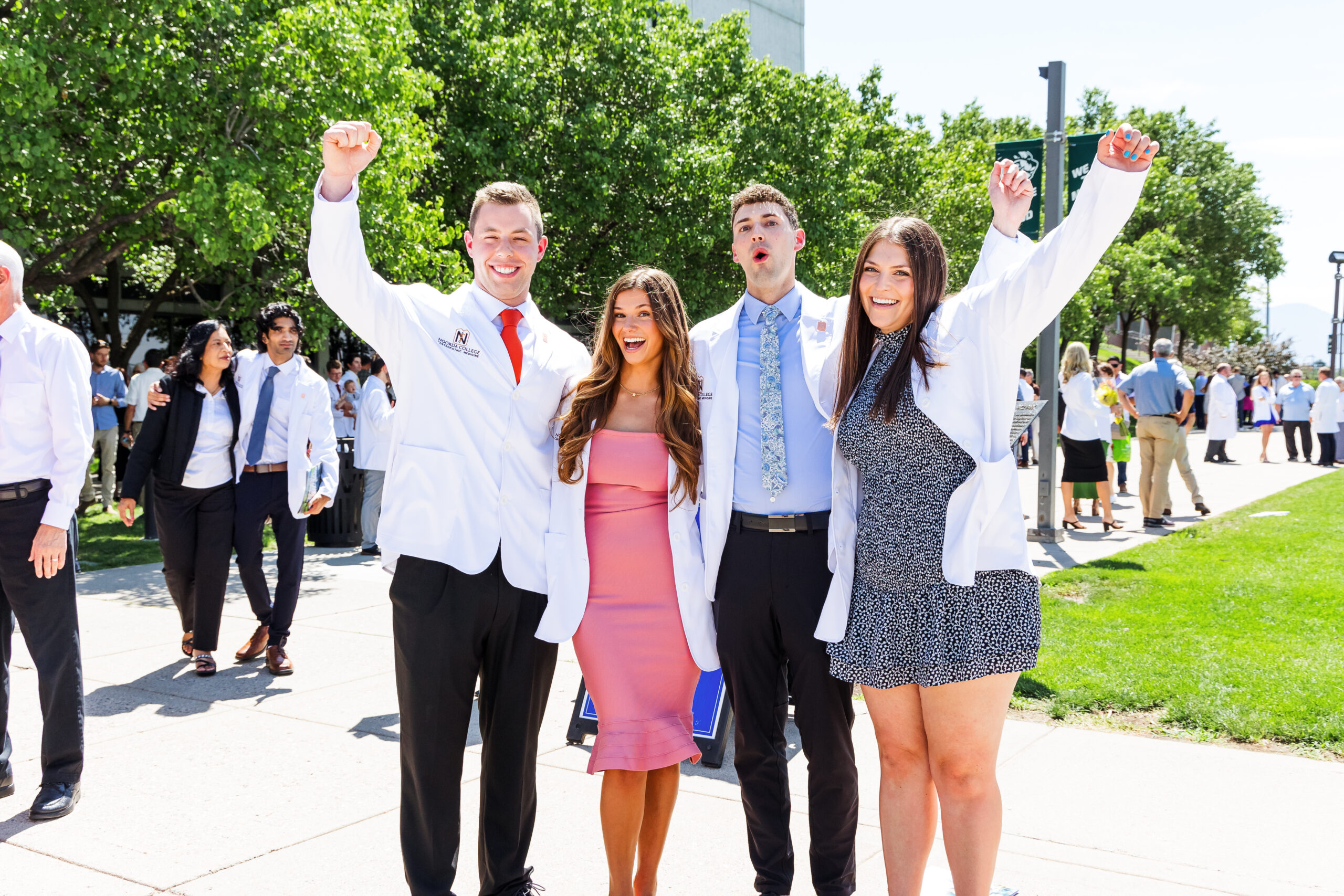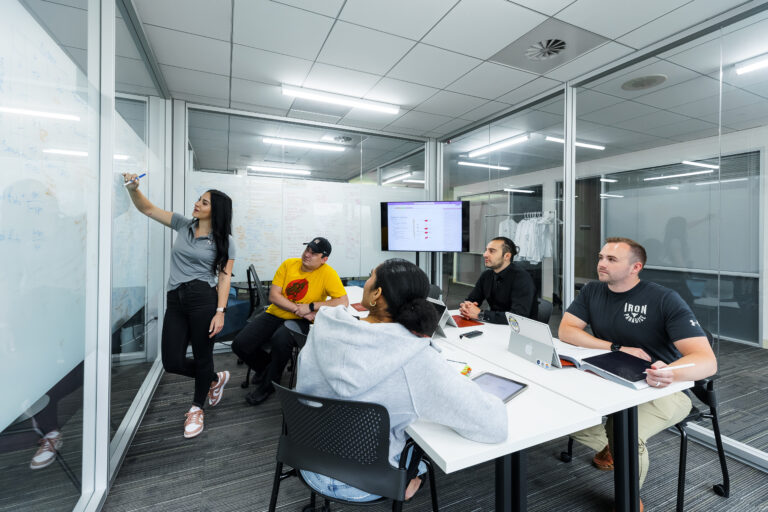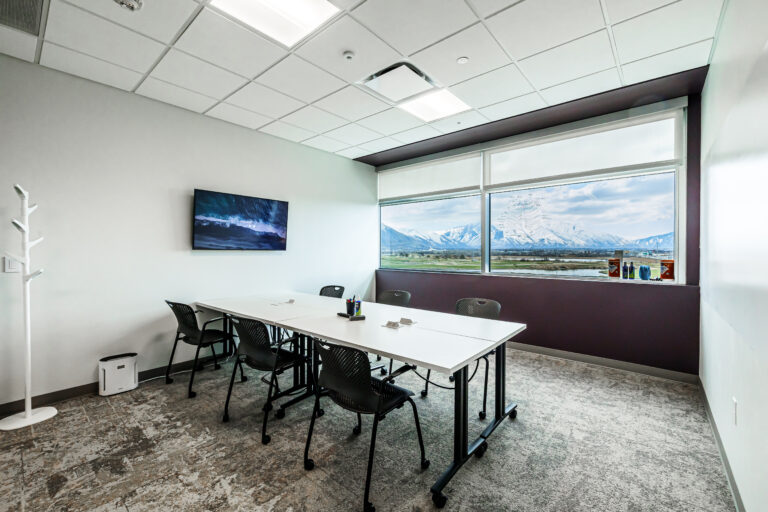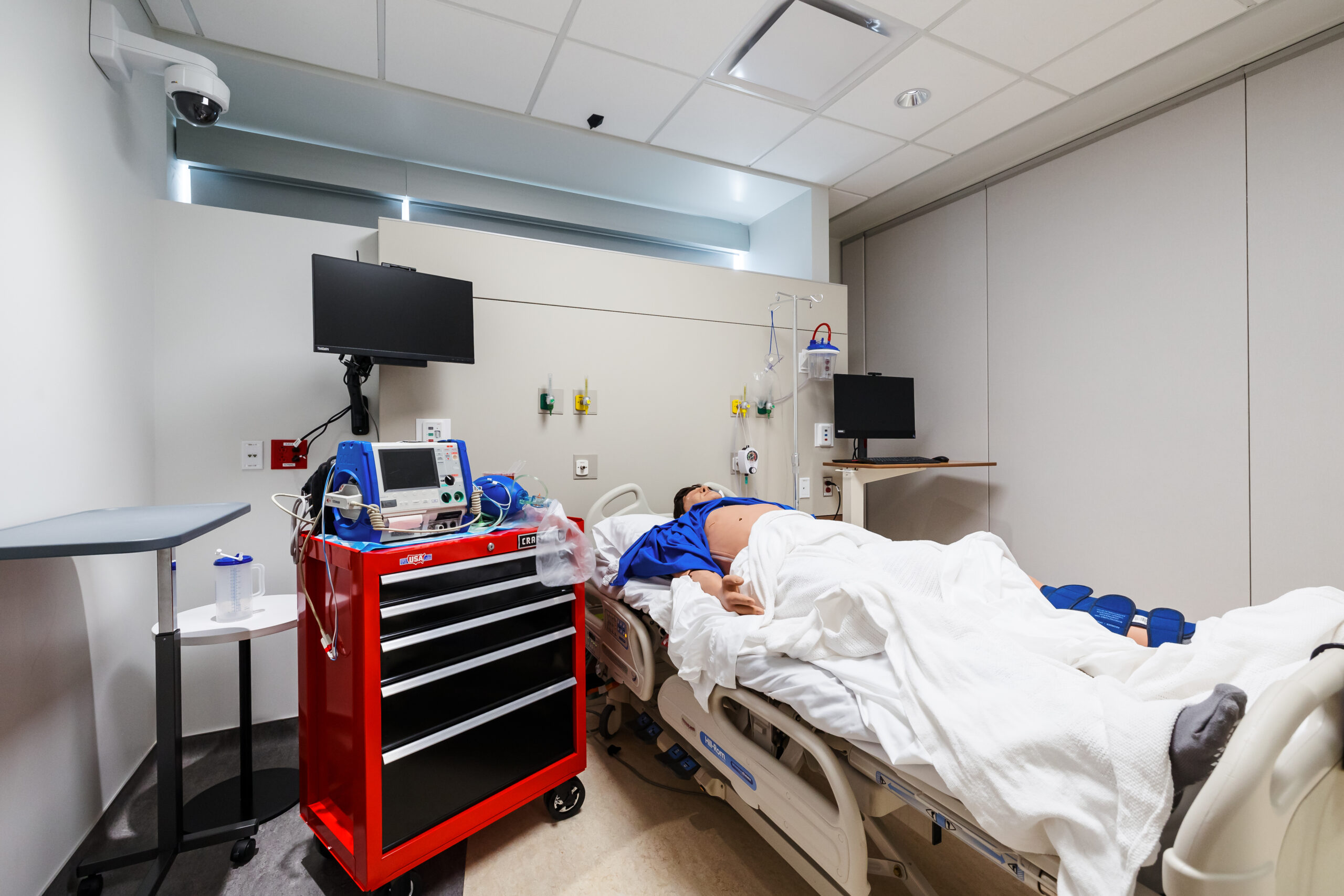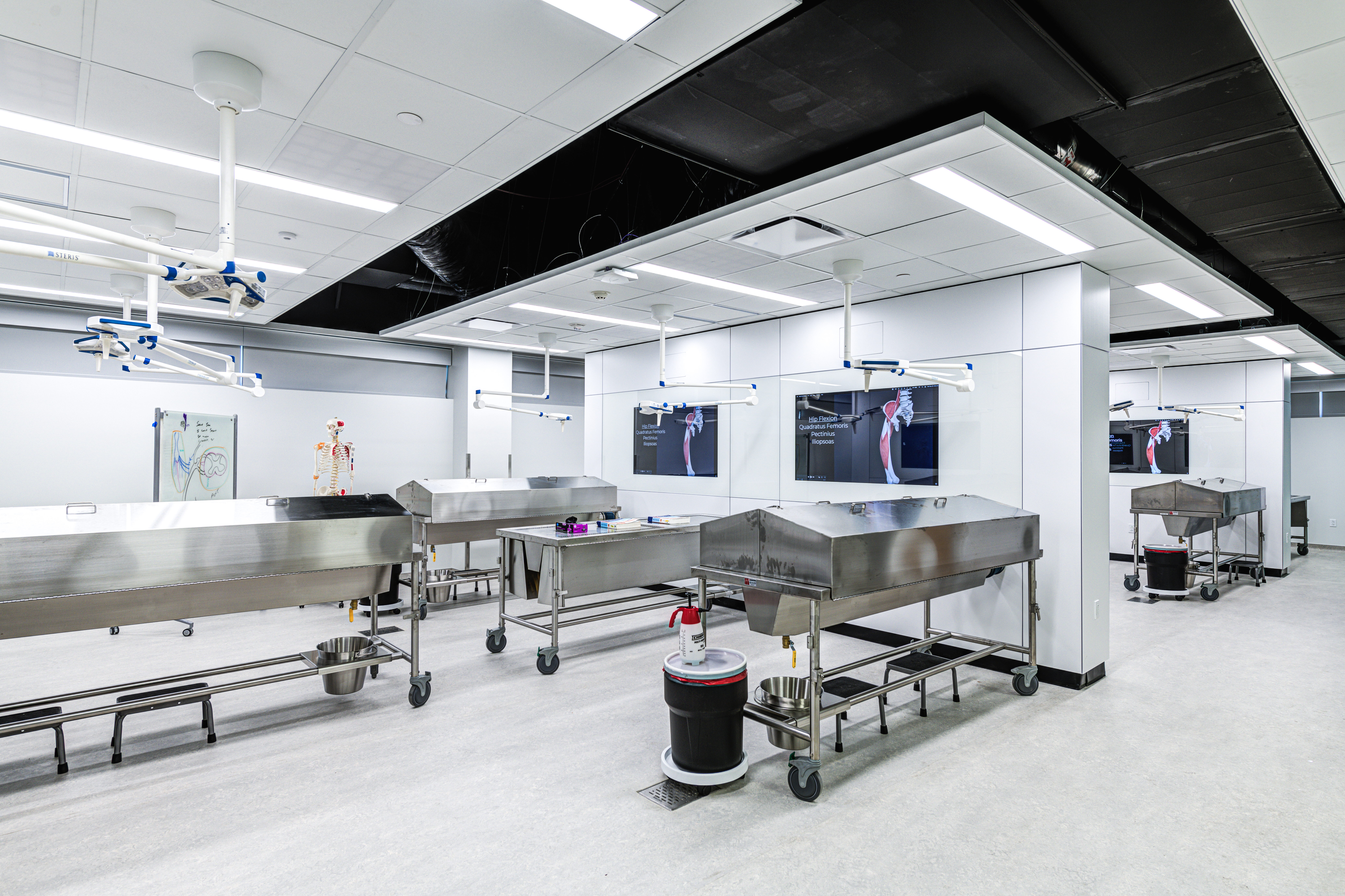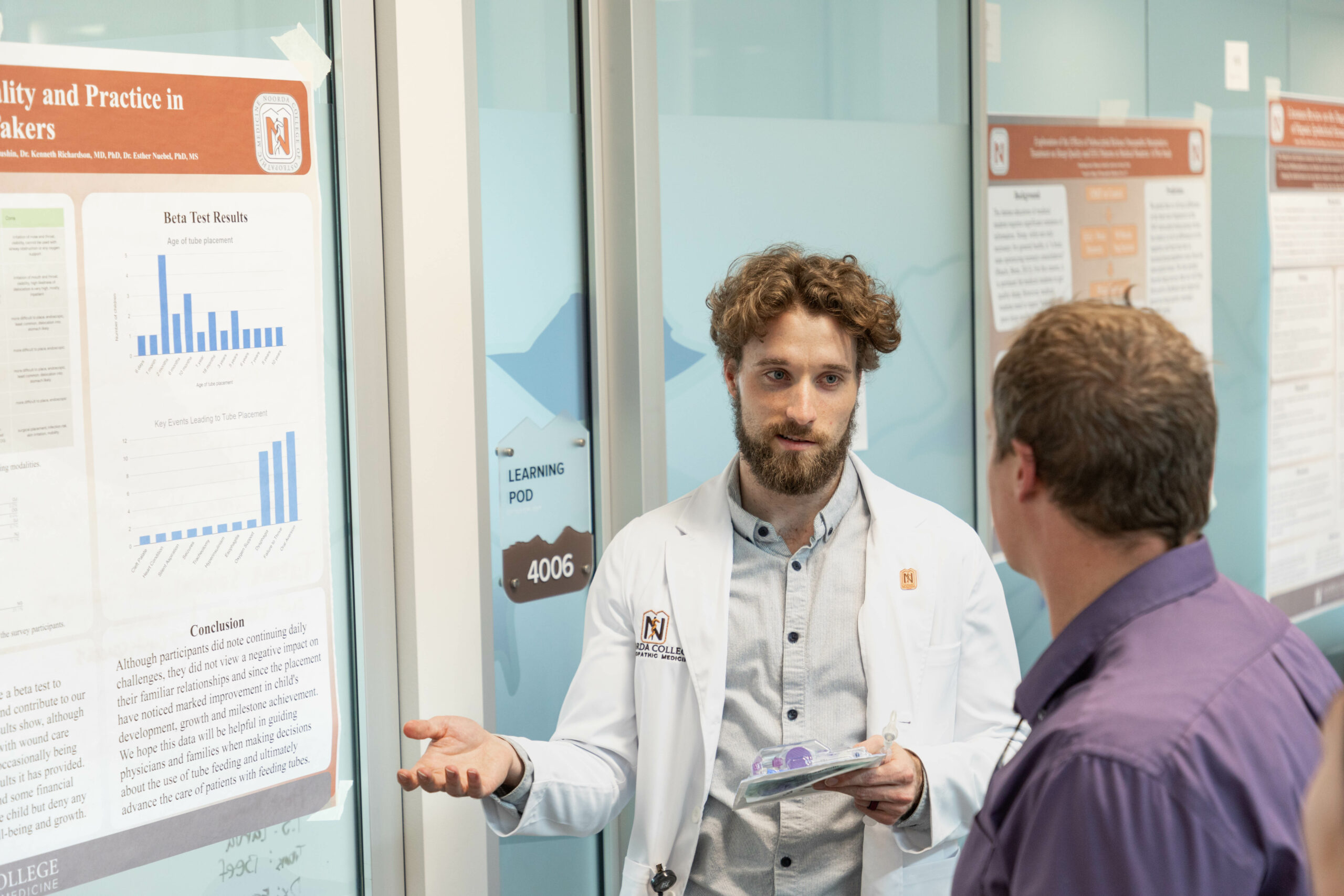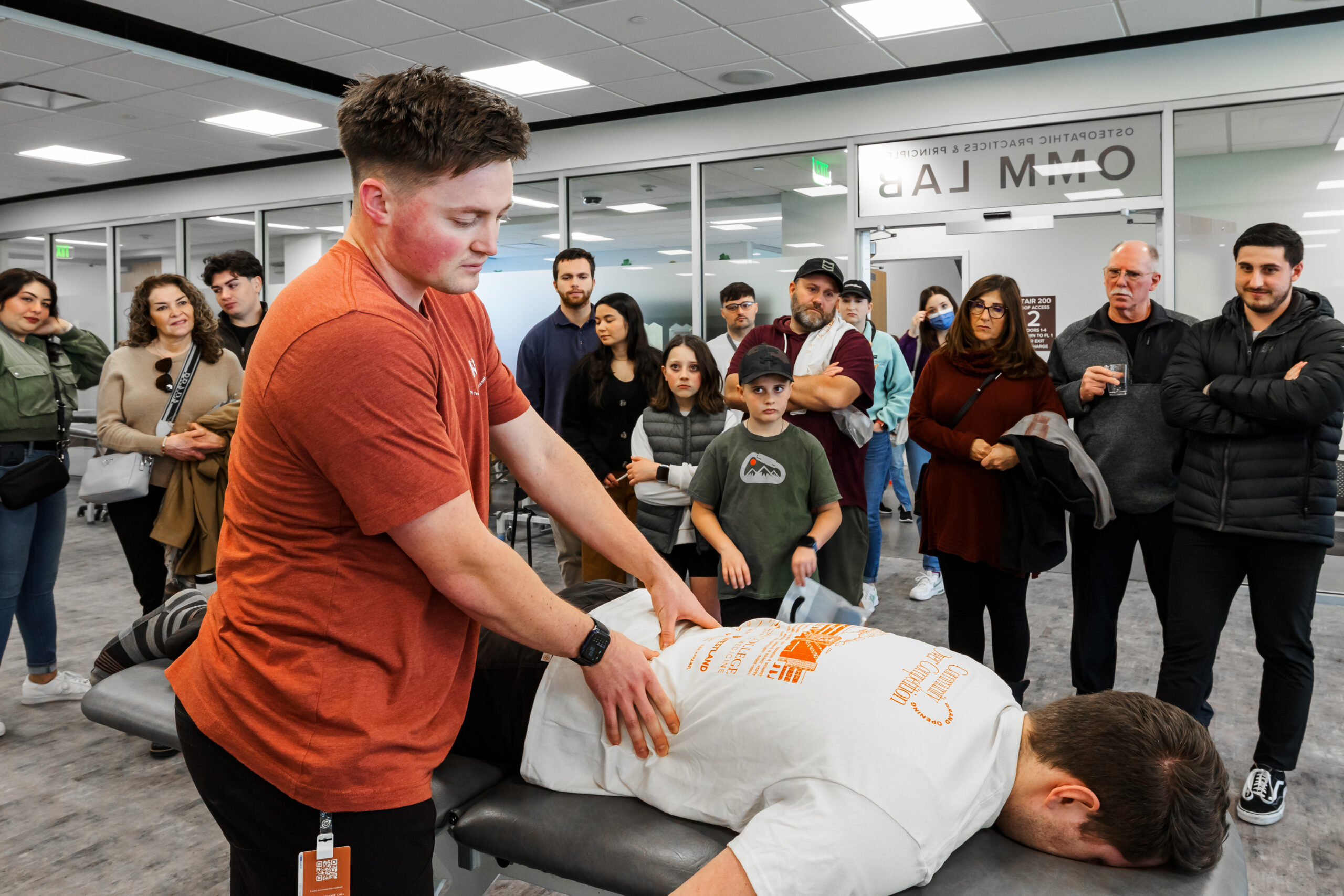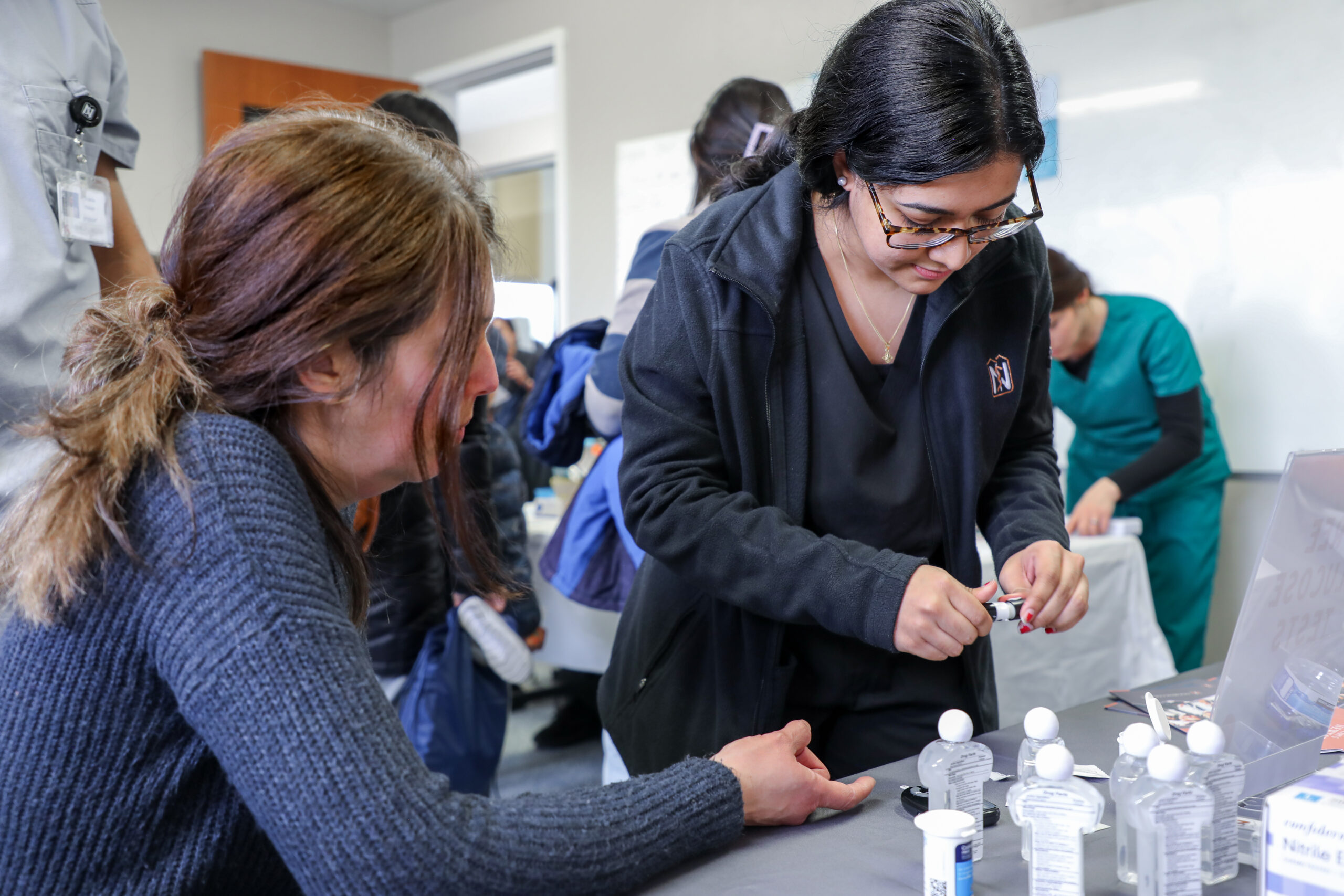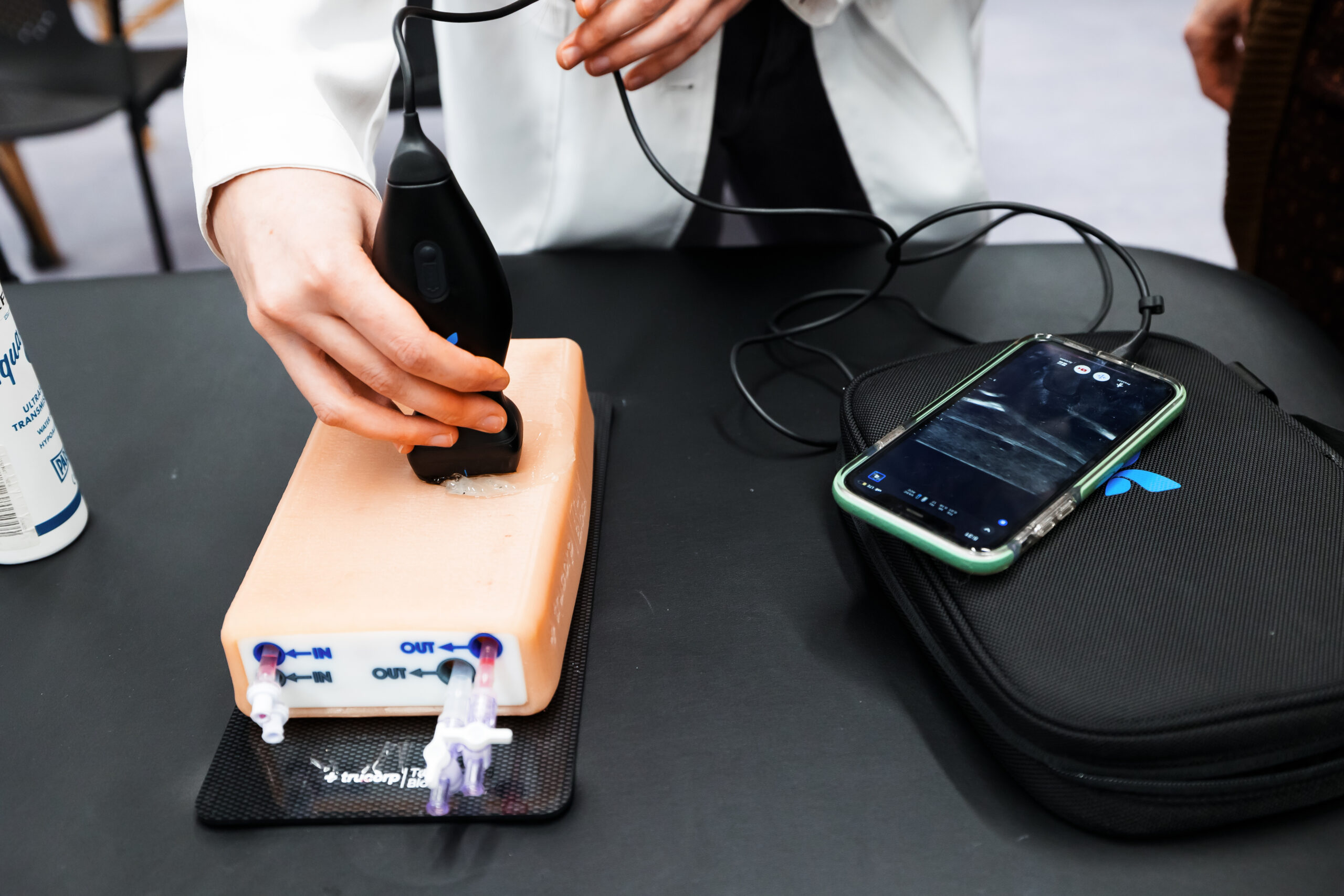At Noorda-COM, people matter most. We are the home of:
- Student-centric, flexible curriculum, via learning pods
- An anatomy lab unique to the nation, with touchscreen walls allowing for a blend of digital and physical learning
- More immersive simulation experiences, via task trainers, patient simulators, and professional patient actors, integrated into Simulation Center and OSCE experiences
- Unique access to cutting-edge technology elective classes, including a Butterfly Ultrasound class, where students practice on Vimedix task trainers
- Tailored research opportunities, beginning in your first year, to add to your residency CV
- Early-on clinical experiences via volunteering at health fairs, the Volunteer Care Clinic, or Kaufusi’s Keikis
- An elective track with emphasis in global health, research, rural, or military medicine
- Dual (MBA or MPH) programs, provided through other universities


